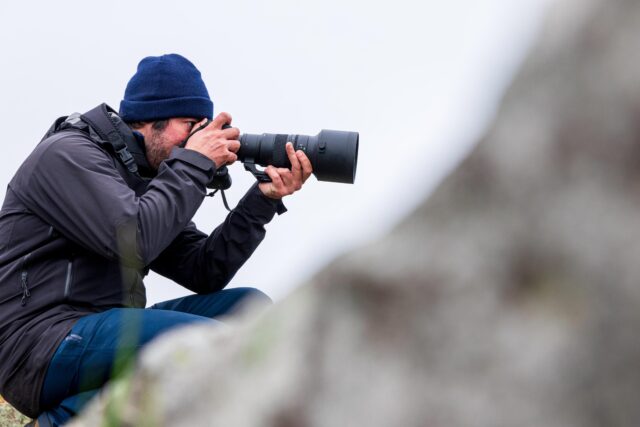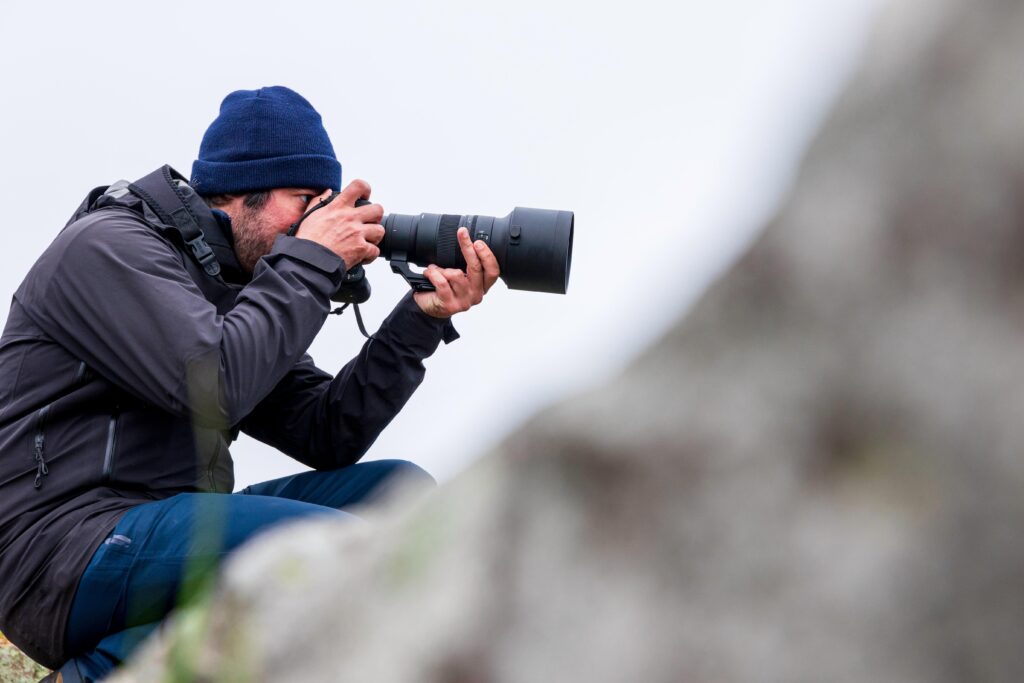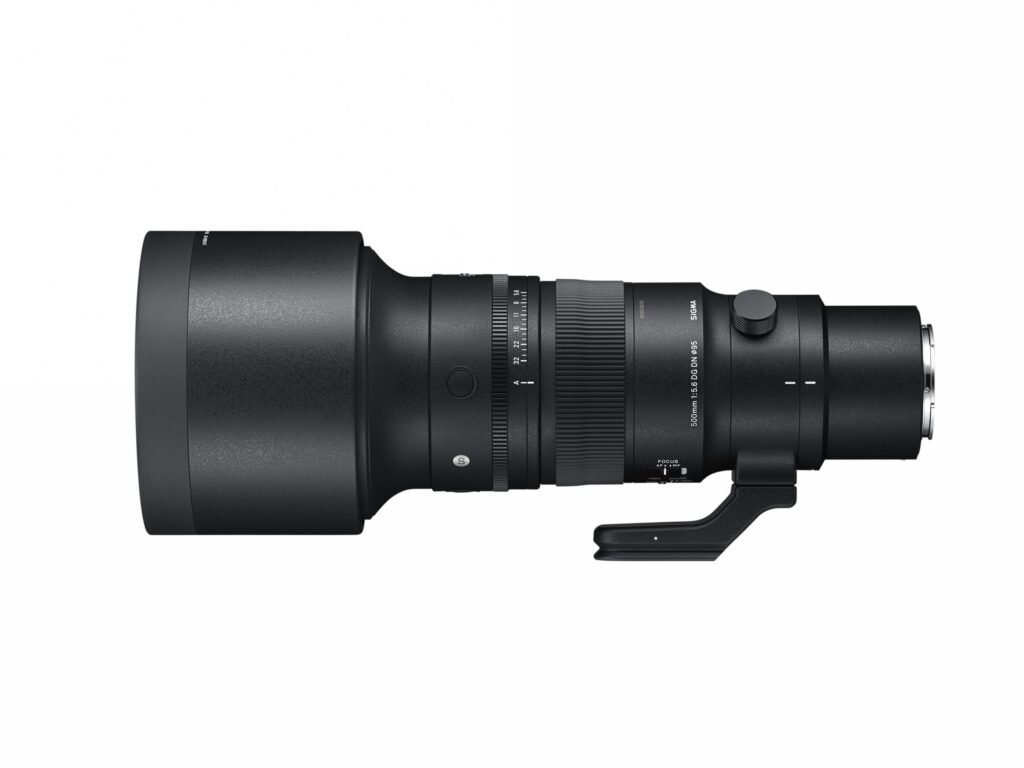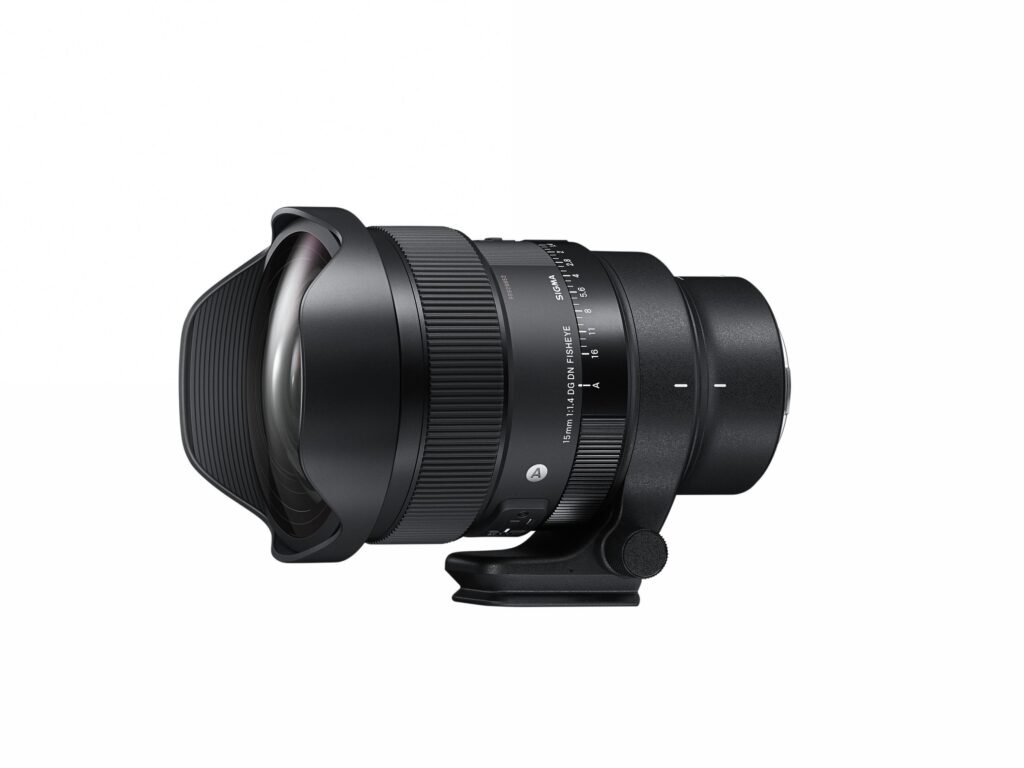Two new lenses from Sigma cover both ends of the prime spectrum, from an ultra-wide 15mm to a 500mm telephoto designed especially for sports photography. The Sigma 15mm F1.4 DG DB Diagonal Fisheye is the world’s first interchangeable full-frame diagonal fisheye with such a wide aperture. It further expands the brand’s range of f/1.4 wide-angle Art lenses. The new Sigma 500mm F5.6 DG DN OS | Sports offers high optical performance, light weight and a professional feature set. Both lenses are available in L-Mount and E-Mount.
The ever-expanding list of L-Mount lenses from Sigma, Leica and Panasonic, represents one of the most comprehensive lens programmes for any interchangeable lens system, ranging from the bread-and-butter to the exotic. With compatible L-Mount cameras ranging from below £300 to over £6,000, the system offers unrivalled choice for the keen photographer.
New Sigma lenses, part one: 500mm F5.6 DG DN OS
By utilising low-dispersion elements, this lens has been reduced in size and weight when compared with Sigma’s previous 500mm prime, the F4 DG OS HSM | Sports. At 1.34kg, it is almost 2Kg lighter than the larger lens. But then again, it is a full aperture stop slower which make a big difference in the design of long telephoto lenses. Sigma claims that the built-in HLA (High response Linear Actuator motor) delivers fast, smooth, accurate and near-silent autofocus, ensuring sharp subjects even when using tracking modes. The built-in OS provides five stops of effective stabilisation.
According to the press release, “To reduce the size of the lens without compromising optical quality, the lens uses convex low-dispersion elements towards the front of the lens barrel. The design of these glass elements also keeps chromatic and axial aberrations to a minimum. Flare and ghosting are prevented by refractive lenses, ideal for when shooting in backlit environments such as sporting arenas or when strong light sources are in or close to being in frame. When compared to the SIGMA 500mm F4 DG OS HSM | Sports for DSLRs, the lens impressively small and a lot lighter, all achieved without using conventional diffractive optical elements”.
Constructed from a combination of lightweight materials, such as TSC (Thermally Stable Composite) and magnesium, the 500 Sports is light enough for shooting hand-held over long periods, reducing the need for a tripod. Its weather-resistant construction prevents dust, dirt, and water droplets from entering the lens, making it ideal for shooting in light rain or on sandy beaches.
Full feature set
The Sigma 500mm F5.6 DG DN OS | Sports offers a professional feature set. This includes a de-clickable tactile aperture ring, a detachable tripod socket and several customisable features. The lens is equipped with a Focus Limiter switch that shortens the focus driving range. This stops the lens incorrectly focusing on objects either in front or behind the subject, speeding up focus acquisition. The three AFL buttons found around the lens barrel can be set to a preferred camera function for easier handling. L-Mount users can customise the lens further by using a SIGMA UD-11 USB Dock to change how the OS operation works or fine-tune the Focus Limiter range.
The 500 Sports is compatible with Sigma’s 1.4x and 2.0x tele-converters to enable AF-enabled shooting at up to an ultra-telephoto focal length of 1000mm.
This telephoto prime fills a gap
The announcement of the 500/5.6 as one of the new Sigma lenses is welcome news for L-Mount users. That’s also because the only area where their options are very limited has been telephoto primes. At the launch of the new standard, there were only zooms. And neither Leica nor Panasonic have made a visible effort to cover the popular focal lengths between 200 and 600mm with primes. One can argue, of course, that the existing zooms offer good to excellent image quality. And the need for superfast long lenses is declining with ever-increasing high ISO abilities of new cameras. And bokeh-wise, it makes no real difference if you use a 300/2.8 (a lens makers’ prestige object for decades) or a 300/4.
The 500/5.6 shows a pragmatic approach to the task of reconciling portability, image quality, and price. Sigma follows the strategy we have already seen from Nikon, most notably, but also from Canon and other manufacturers. Their comparatively slow but lightweight and (relatively) affordable telephoto primes are very popular among nature, wildlife and sports photographers. Furthermore, advances in image stabilisation are now enabling hand-held shots that you might not have imagined a few years ago.
Let’s dream of more telephoto lenses…
It remains to be seen if Sigma or another partner in the L-Mount alliance will add more telephoto primes. A compact 300/4 below 1kg for hand-held photography would be most welcome, and it could transform into an 800/8 with the 2x converter. Sure, the Leica 90-280 offers the 280/4 option, and this with absolutely stunning image quality from wide open. But keep in mind, this lens costs €6,690 and weighs in at 1.7kg, considerably more than the new Sigma 500.
It may also depend on market reaction if Sigma and other manufacturers take the risk of adding more long primes. Development costs are considerable for such lenses. If production numbers remain low, the individual product will become too expensive. The pricing of the new 500/5.6 shows that Sigma searched carefully for the sweet spot. Maybe this will motivate the company or another partner in the L-Mount alliance to think about a 600 or even an 800mm prime.
New Sigma lenses, part two: 15mm F1.4 DG DN DIAGONAL FISHEYE | Art
This lens is, according to Sigma, the world’s first full-frame consumer f/1.4 diagonal fisheye lens for an interchangeable system. With a 180deg angle of view, the Diagonal Fisheye is ideal for landscapes, skies, architecture, and creative portraits. It also includes useful features for astrophotographers. The built-in rear filter holder allows for gel-type ND filters to be inserted. A lens heater retainer prevents heat strips from slipping over the front of the lens, and a unique manual focus lock switch that disables the focus ring.
The Sigma 15mm F1.4 DG DN DIAGONAL FISHEYE | Art comprises 21 glass elements in 15 groups, 4 FLD and 3 SLD low-dispersion glass elements, which effectively reduce sagittal coma flare and other aberrations. This helps ensure that bright points of light remain sharp at all apertures across the entire frame. To help prevent flare and ghosting, the 15mm f/1.4 was designed using state-of-the-art simulation technology, Sigma claims.
The manual focus lock switch on the barrel allows astrophotographers to disable the focus ring, useful once the lens has been set to infinity. An autofocus lock switch is included on the lens barrel, and it can be customised depending on the camera and system.
The Diagonal Fisheye expands the Sigma range of f/1.4 Art lenses to four, including the 14mm, 20mm and 24mm models. Other than the “normal” wide-angles, it gives the images shot with the new 15mm lens the typical fisheye rendering — straight lines appear curved, creating a “globe” effect. While this can quickly become tedious if used carelessly, it can create fascinating effects in the hands of a skilled photographer.
Prices and availability
Both new Sigma lenses will be on sale from 14 March 2024. The 15mm Diagonal Fisheye has a recommended price of £1,859, including VAT in the United Kingdom. The 500mm Sports will cost £2,779, including VAT. US prices are expected to be $1,999 and $2,999 respectively, both excluding tax. European prices to be announced.
More on Sigma
The L-Mount Alliance
Want to contribute an article to Macfilos? It’s easy. Just click the “Write for Us” button. We’ll help with the writing and guide you through the process.














Great News! Yeah Sigma and Panasonic. It is so nice to see that they do not have to blame lack of new products on Covid supply issues like Leica. I do not believe Leica on a few things but I do love their cameras and glass.